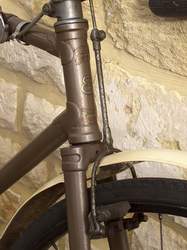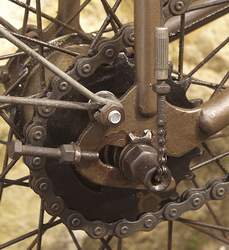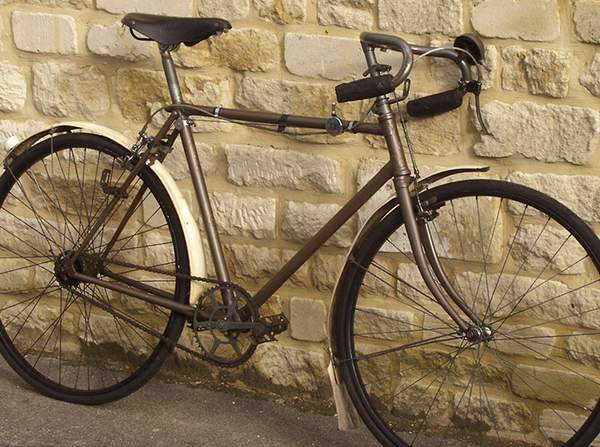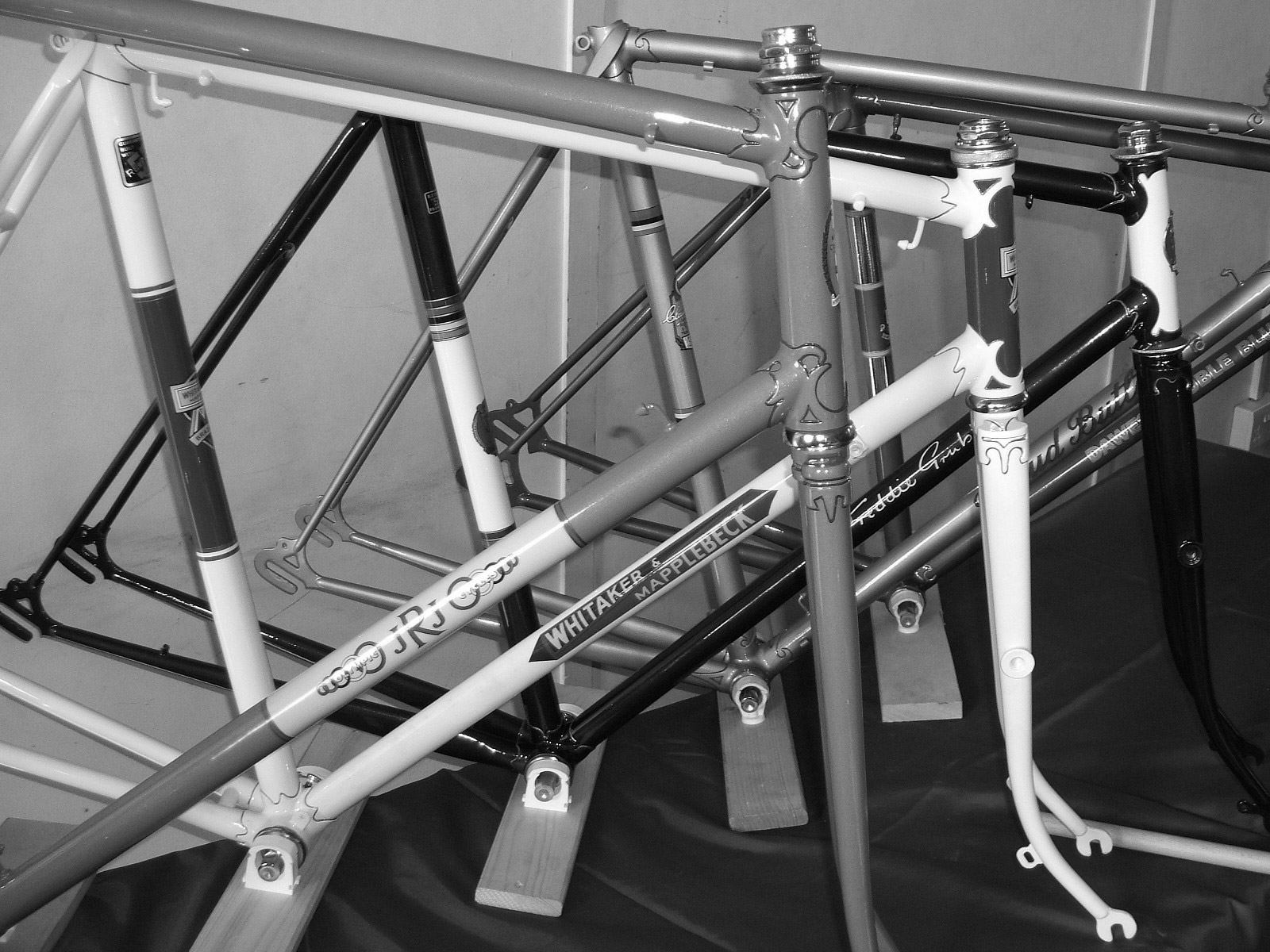F W Evans 1920s–30s
Posted: Tuesday 21st July 2020
The first builder in Britain of specialist touring bikes, a pioneer in the use of derailleur gears for touring, at least three patents which were of real use to hard riding cyclists, a pioneer in the use of brazed-on fittings and one of the main forces behind the change to the lightweight design of bicycle – is that enough to qualify as a Design Classic?

F W Evans was not himself a framebuilder but rather a man of ideas and a bike shop proprietor. He was editor of Cycling magazine for a couple of years in the very early 20s before setting up his first bike shop in 1922 in Westminster Bridge Road. He issued a 24 page booklet explaining why the new lightweight design (low bottom bracket, brazed up straight and tapered rear stays, 26in wheels and compact frame size) was superior to the old style. As a short aside recent research by David Hinds, the Veteran Cycle-Club’s marque enthusiast for Granby has revealed that Granby were by 1915 building in the new style making them probably the first builder in Britain to do so. F W Evans whilst editor of Cycling promoted the new design and in his new shop stocked bikes in the new design from the more forward thinking larger builders such as James.

But soon he turned his attention to building frames under his own name in the new design. One of the features of the new design was the double fixed hub with two fixed sprockets – one on either side of the wheel which was turned around to give two different ratios. Of course this was always a slightly fiddly job as the chain tension had to be got just right. In 1925 F W Evans patented a rear fork end with screw adjusters and washers on the hub axle (Right). It allowed the wheel to be turned around and replaced in the frame with a different size rear sprocket maintaining exactly the same chain tension. Other fork ends had been designed to do a similar thing but most were more fiddly to use. For this he was awarded the CTC Silver Plaque for the greatest improvement in cycle design in 1926. He claimed he could turn a wheel around in an Evans frame blindfolded and with one hand tied behind his back and get perfect chain adjustment in 55 seconds!
Another early patented feature of his frames was the Evans Direct Lubrication System. Oil ports were provided in the bottom bracket, head tube and hubs enabling these bearings to be easily oiled with an oil gun. They were much copied by other makers but the Evans version actually had little channels to direct the oil onto the bearings. A nice touch which made maintenance easier.
More important was his involvement with several prominent CTC hard riding tourists (A W Romney, ‘Hodites’ and M H Clutterbuck were just some) in building bikes specifically designed for touring. Very early on before derailleur gears were being officially imported from France Evans built bikes incorporating the Cyclo derailleur gear. When the Cyclo derailleur became widely available by 1930 he featured special touring models with them in his catalogue. During the 1930s he regularly built machines with three, four, six, eight and at least one with 12 (triple chainwheel/4-spd freewheel) gears for his customers. His 30s catalogues were full of advice for customers wishing to use the derailleur. His touring frames also frequently featured brazed-on fittings for bag supports, racks, gears and hub brakes which was far advance of his time.
In the late 1930s he devised a frame layout jig that allowed any frame design to be checked for practicality without doing a drawing. One of these jigs was still in use until recently by Tom Board because it worked so well! F W Evans himself died in 1944 but the shop continued – it was the foundation behind the present Evans group of shops in London.

Equipment
Pretty much standard equipment from the time was used though he did have his favourites – Lock pull-up brakes (as on the featured bike) were a common feature prior to the introduction and common use of Resilion cantilever and hub brakes in the 1930s.
Frame numbers
Compared to the other important makers of the time – Grubb, Selbach, Granby Evans frames were built in small numbers – probably no more than 3000 during the whole of the 1930s. Unusually the frame numbers were stamped on the seat lug, a feature shared by only a few other builders including Ellis Champion whose frames are very similar in design and features.
A Special model
In 1928 Evans patented a frame with ovalised top, down and seat tubes, the Evans Oval. He claimed that the oval tubes increased lateral rigidity 18% or offered a greater vertical resilience. These frames were made in very small numbers in the 1930s – unlike many of the other frame designs (curly Hetchins, Baines gate) it was not obvious on first sight so did not attract buyers who wanted something different.
Posted: Tuesday 21st July 2020
This article appears in the following categories.
Upcoming Events
Whether you are looking for a gentle social meet up, or a 100-mile ride browse the community’s upcoming events and plan your next weekend outing.
